Standout Films Of 1939: GONE WITH THE WIND & THE WIZARD OF OZ
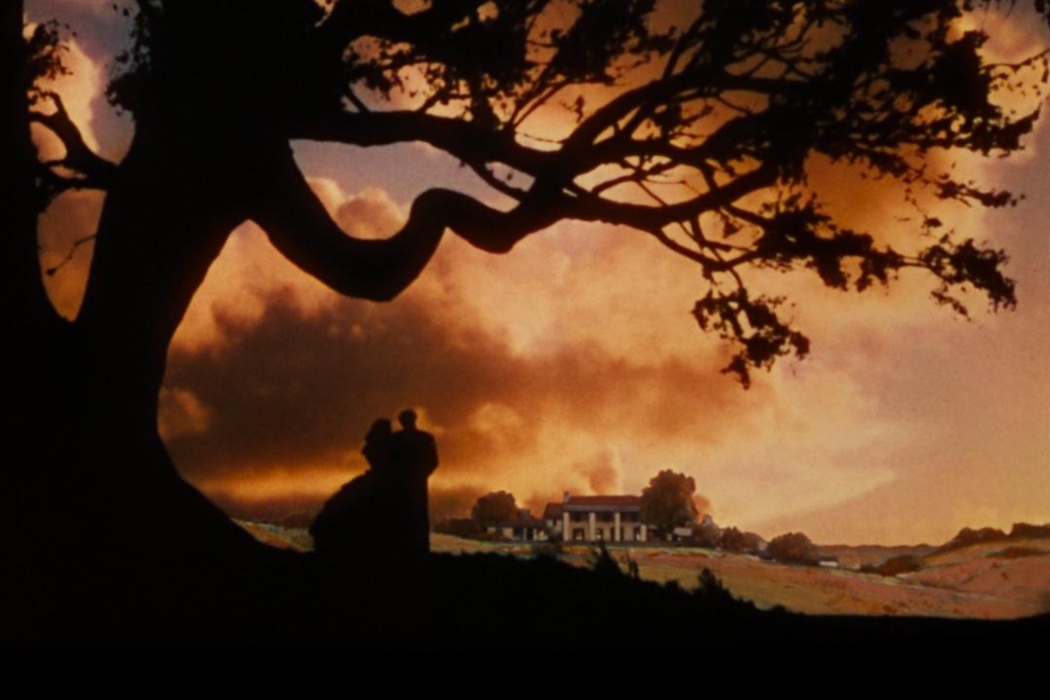
Katy Kostakis’ loquacious nature and a lifelong love of performing…
As the world was still in the midst of recovering from the Great Depression that gripped the economy for much of the 1930’s, going to the movies was always considered a true treat; a way for the masses to momentarily escape the severe problems that existed around every corner. By the end of the decade, the economy started to recover and with that improvement came an immense output of films in 1939, so many in fact, it has been heralded as the standout year in the Golden Age of Cinema. Most film lovers think of 1939 most fondly, and rightly so.
This extensive list of such phenomenal films released eighty years ago includes such gems as The Women, Dark Victory, Stagecoach, Wuthering Heights, Goodbye Mr. Chips and The Private Lives of Elizabeth and Essex, but there are two movies from that particular year that are undoubtedly considered cinematic crown jewels. The Wizard of Oz and Gone With the Wind have remained consistently on countless “Best of” lists throughout the years. Even if you aren’t a fan of those two movies, it is virtually impossible to discuss film history or theory without some mention of these groundbreaking classics.
“Frankly, My Dear. I Don’t Give a Damn.”
With Margaret Mitchell’s 1936 sweeping novel about life in America’s Old South at over 1000 pages, it’s only fitting that the adaptation of Gone With the Wind would be just as elaborate…and long. Coming in at about 4 hours, the length of this movie may be off-putting to some, but how would you be able to truly detail the detail in a shorter run time?
Our protagonist is a certain selfish, vain, spoiled, and pampered girl named Scarlett O’Hara. As the oldest daughter of a plantation owner, Scarlett was expected to be the epitome of gentility and femininity in a patriarchal society, where women were expected to be subservient to all the men in their lives, be they fathers, brothers or beaux. Her infatuation with Ashley Wilkes and jealousy over his marrying his cousin Melanie Hamilton is a continuous subplot throughout the novel. Once she meets Rhett Butler, all bets are off. The two of them are intertwined so tightly, that their emotional involvement almost becomes a stranglehold.
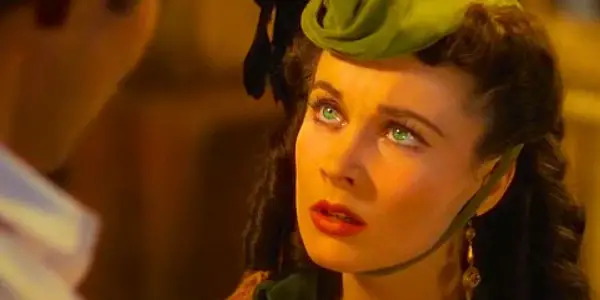
Against the backdrop of the Civil War, where death, strife, starvation and poverty are of constant concern, throughout the novel, the self-absorbed Scarlett (somewhat) abandons those ways to try to keep the plantation and her family afloat, yet she used her feminine powers to her advantage, landing two husbands in the process, with the first marriage made out of spite and the second out of necessity, but the impending passionate love and inevitable coupling of Rhett and Scarlett was always bubbling underneath the surface.
Selecting the actors to bring life and breath to Mitchell’s characters was not simple, and there was an extensive casting process, particularly for the novel’s center of the universe. In my opinion, no one could have played this characters better.
Portrayed by Olivia de Havilland, Melanie Hamilton Wilkes, the soft spoken and gentle cousin/wife of Scarlett’s beloved Ashley, is the polar opposite of Scarlett. Melanie was sweet and intelligent, but didn’t have Scarlett’s fire. Whether she realized that Scarlett married her brother, Charles, to have an excuse to keep pining over (and trying to steal) Ashley or not, Melanie admires her sister-in-law’s strength and balls to the wall attitude. Whenever Scarlett was the brunt of another lady’s catty remarks, Melanie delicately, yet staunchly defends Scarlett. Melanie seemed to be the only one who truly could see into Scarlett’s soul, despite her less than admirable qualities.
As the rakish Rhett Butler, Clark Gable’s handsome looks added to the sex appeal of the charmer from Charleston. Scarlett and Rhett fit like a glove, and the major credit to Gable’s performance is showing how Rhett knew how to handle her. He could see right through her schemes, but he truly admired her gumption and rather aggressive nature. He knew how Scarlett’s mind worked and was one step ahead of her. She was quite brilliant, cunning, sneaky, and undoubtedly a firecracker – and Rhett loved that about her. He would give her a little push to bail her out of a jam, particularly when she needed money to pay taxes on her beloved plantation, Tara, but ultimately let her fend for herself.
Ashley Wilkes may have been the one Scarlett thought she wanted throughout the book and movie, but all of us know it would have never worked out. Leslie Howard’s portrayal of the gallant, yet quiet Ashley was much too sedate for Scarlett. He fought in the Civil War and proved to be an admirable gentleman. Once he returned from battle and started a business with Scarlett’s second husband, Frank Kennedy, he continued to be a man of noble character. He’s the one who had to put the thought back into Scarlett’s head regarding Tara, and finally, she comes to her senses about her “love” for him.
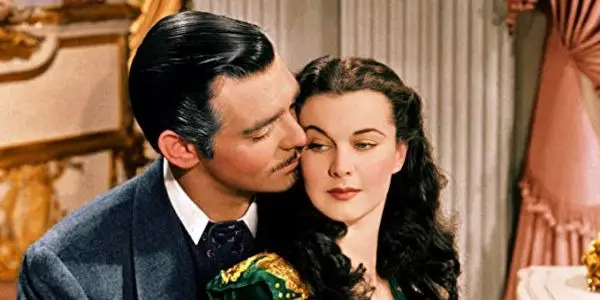
The true star of the supporting cast was Hattie McDaniel as the O’Hara’s house servant, Mammy. Scarlett regards Mammy almost as a second mother, but makes an effort to carefully maintain and demonstrate the type of relationship they had, which also applies to the other servants. If you take that out of the equation and you only look at Mammy’s character, she is wise, all-knowing, and protective. This performance would make history, as McDaniel would be the first African American nominated for an Academy Award and won for Best Supporting Actress.
As for the red blooded woman herself, who would land the role of a lifetime? According to sources, most actresses in the studio system rallied for such a coveted role, including Alabama native Tallulah Bankhead. Once it was announced that a British actress would be taking on the role of one of the most famous characters in American literature, I think Vivien Leigh was ready to show them how it was done. Leigh took the part and ran with it. Playing her from a teenager to well into her twenties, Leigh showed unfathomable emotional depth, and she was no fragile magnolia. Even though there were always ulterior motives, she would do almost anything she had to do to keep her family and their lives intact. Leigh’s believability as a Southern American would win her the Academy Award for Best Actress and she would do the same several years later, playing Blanche DuBois in A Streetcar Named Desire.
As sources state, GWTW was nominated for thirteen Academy Awards (with two of its eight wins in the acting categories, as mentioned above) As of this writing, the only member of the main cast that is still living is Olivia de Havilland, who will celebrate her 103rd birthday this July. Her career would continue to flourish throughout the years, with a number of awards and accolades.
No one can say that GWTW didn’t deliver stunning cinematography. From the Burning of Atlanta to those gorgeous sunset scenes of the outskirts of the plantation, the production crew went above and beyond to show such a deep richness and color of its rural setting.There continues to be much debate as to the true merit of this movie and whether it’s acceptable to still consider it a cinematic masterpiece due to the source material and content. While GWTW depicts, without a doubt, a deplorable and painful period in this country’s history, and many think this novel and film romanticized slavery and war, it bears mentioning that this was a story of a certain time. What if it hadn’t have been written at all?
“Toto, I have a feeling we’re not in Kansas anymore.”
What child wasn’t completely mesmerized by The Wizard of Oz after their first viewing?
L. Frank Baum’s 1900 book, The Wonderful Wizard of Oz, about a Kansas farm girl who ends up in a magical land was adapted into a film that has been constantly screened and viewed to many generations of children, myself included. Dorothy Gale lives with her Aunt Em and Uncle Henry, along with the family farmhands, and her cute little pup, Toto. Elmira Gulch, a rich woman and a bit of a crab, claims that Toto bit her and she wants to take the dog to be put down. After Toto is taken away, Dorothy decides to leave and meets fortune teller Professor Marvel. Unbeknownst to her, he is a charlatan. Once she returns home, the entire house gets caught in a cyclone, eventually landing in the colorful world of Oz.
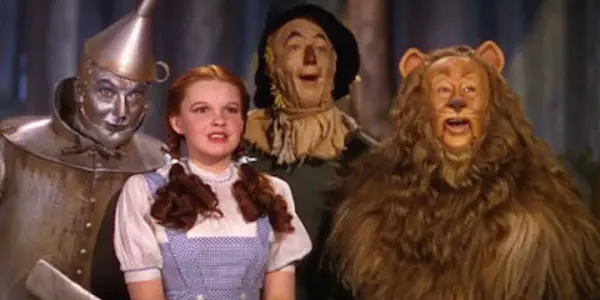
Every little girl wanted to walk the Yellow Brick Road to get to the Emerald City, making new friends along the way and avoiding all kinds of dangers together. Full of magic, music, and action, The Wizard of Oz won the hearts of the young and old.
Teenage Judy Garland may have been a bit on the older side when cast as Dorothy Gale, but this child star, with the diamond voice, played her with such wide-eyed innocence, that it is very hard to imagine another possible contender, Shirley Temple, in the part. Her portrayal as a scared girl who just wanted to go home was charming and showed her range and depth.
The supporting cast featured Bert Lahr as the lovable Cowardly Lion, Jack Haley as the over-emotional Tin Man, Ray Bolger as the slightly daffy Scarecrow, Billie Burke as Glinda, the beautiful and kind Witch of the North, green-faced Margaret Hamilton as the ruthless antagonist, the Wicked Witch of the West, and Frank Morgan as the titular character.
What can I say about this film that hasn’t been said already? Who doesn’t get goosebumps when the muted sepia tones shown in the first few acts morph into glorious, rich color when Dorothy lands in Oz or when they feast their eyes on the beautiful sets, costumes, and gorgeous cinematography, Of course, the high point is Garland’s soaring voice singing “Somewhere Over the Rainbow”(which won an Academy Award for Best Original Song) and all those other wonderful melodies that audiences keep singing time and time again.
Yes, Dorothy was trying to get home, and her friends were trying to get virtues they thought were lacking in their lives, but as the “great and powerful” Wizard pointed out, each of them had both the power and the answer within themselves all along. When saying goodbye to Dorothy, The Tin Man expresses what all of us feel when the closing credits air, “Now I know I’ve got a heart ‘cause it’s breaking.”
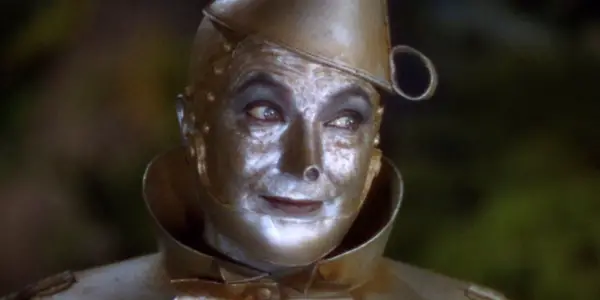
After all, tomorrow is another day
What has always amazed me was that these films (as well as the others released that year) were created with nowhere near the amount of resources and flexibility we have these days. They managed to fashion such beloved and critically acclaimed movies with only the use of makeup, costumes, cameras and sets. There were no digital tools to adjust coloring issues to film, no CGI to substitute for massive pastures or bejeweled castles. They were creating masterpieces against considerable odds.
However these films weren’t without their issues. Directors were fired and replaced. Multiple writers kept readjusting scripts. Actors had to be loaned out by their studios to uphold their contracts. It was all chaotic and difficult, but the end products were amazing.
What worked both against these films and to their advantage was the requirement to adhere to the Production Code, where the preservation of morality and upholding of ethics took precedence over artistry. The movies of that time had to maintain a semblance of honor and dignity and they met that challenge.
1939 may have provided temporary relief from the tumult of the Depression, but things were about to get worse with the onset of World War II. Who would have guessed that in that point in time, with such global devastation, true artistry was created. These films may have been released eighty years ago, and if by some chance, the studios start considering them to be remade, I do not think moviegoers would embrace them. Please don’t fix what isn’t broken.
What are some of your favorite films from 1939? Do you think the Production Code’s regulation helped or harmed the creation of these movies? Tell us your thoughts in the comments below!
Does content like this matter to you?
Become a Member and support film journalism. Unlock access to all of Film Inquiry`s great articles. Join a community of like-minded readers who are passionate about cinema - get access to our private members Network, give back to independent filmmakers, and more.
Katy Kostakis’ loquacious nature and a lifelong love of performing led to her training for a broadcast career, yet her distinctive voice and style, with its conversational and highly descriptive tone, helped her to find her calling in written media. That love of words has produced a vast body of work, so when she isn’t working, writing, or talking everyone’s ears off, Katy enjoys ‘80s, rock, techno, and industrial music, the films of Alfred Hitchcock, art museums, Renaissance and Medieval history, and Britcoms. To view her work, please visit her website at katykostakis.com and follow her on Twitter: @KatyKostakis.












